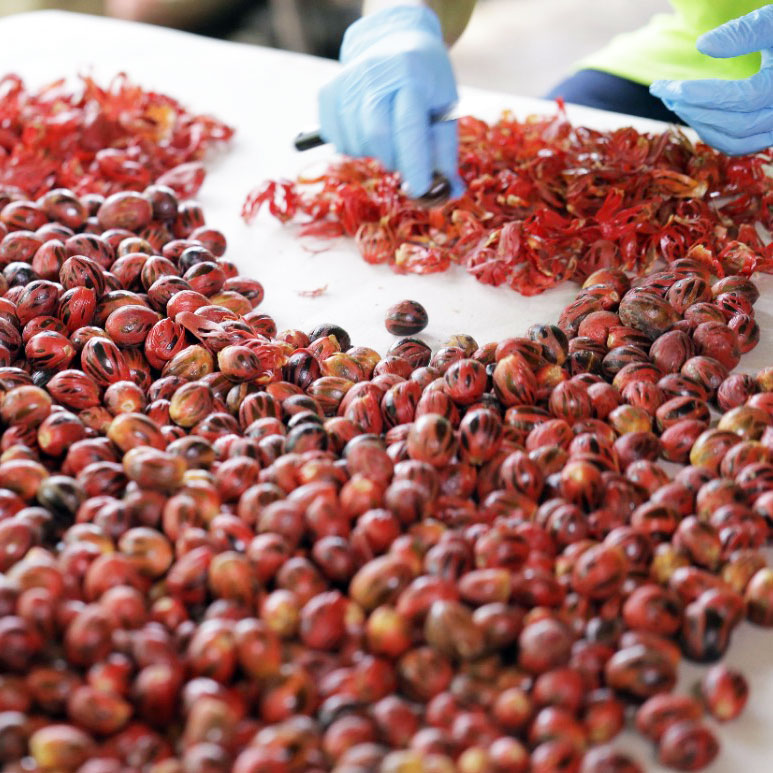Description
Ingredients
Nutrition Per 100g
Packaging
Description
Mace spice is a dried, outer aril, enveloping firmly around the nutmeg kernel. Nutmeg kernel and mace arils indeed are two separate spice products of same nutmeg fruit.
Ingredients
100% Organic Mace
Nutrition Per 100g
Energy 517 kcal
Total fat 29 g
Saturated Fatty Acid 9 g
Cholesterol 0 mg
Protein 7.1 g
Total Carbohydrates 57 g
Sugar 0 g
Dietary fiber 14 g
Sodium 86 mg
Vitamin D 0 mg
Calcium 257 mg
Iron 14 mg
Potassium 457 mg
Packaging
Packaging type – Weight – Primary – Secondary
Consumer packs – 250 g +/-1% – PE inner bag – Corrugated
500 g +/-1%- PE inner bag – Corrugated
1 kg +/-1% – PE inner bag – Corrugated
(Further packing sizes available on request)








